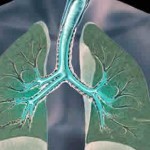Hospitalization rate based on changes in physical activity in people with COPD
 Emphasis in this study by researchers in Spain was on walking, the most common form of physical activity.
Emphasis in this study by researchers in Spain was on walking, the most common form of physical activity.
First, the details.
- Results come from 391 survivors evaluated among 543 people initially treated for chronic obstructive pulmonary disease (COPD).
- Patients reported the distance they walked (km/day) at least 3 days per week.
- Low physical activity was 2 miles (3 km) per day or less.
- Moderate was 2 to 4 miles (3 to 6 km) daily.
- High was anything above that.
- Hospitalizations were recorded.
- All patients with at least a 2-year follow-up after enrollment were evaluated.
- The main outcome measured was the number of hospitalizations for exacerbated COPD within 3 years occurring 2 to 5 years after study enrollment.
And, the results.
- In these patients, the average FEV1 was 52% of the predicted value.
- FEV1 (forced expiratory volume in 1 second) is the amount of air in your lungs that you can blow out within 1 second, with 80% being normal.
- Patients who maintained a lower level of physical activity had a higher rate of hospitalization.
- Among those with the highest level of physical activity, patients who decreased their physical activity showed an increasing rate of hospitalizations.
The bottom line?
The authors concluded, “Patients with COPD with a low level of physical activity or who reduced their physical activity over time were more likely to experience a significant increase in the rate of hospitalization for exacerbated COPD.”
Furthermore, “Changes to a higher level of physical activity or maintaining a moderate or high level of physical activity over time, with a low intensity activity such as walking for at least 3-6 km/day, could reduce the rate of hospitalizations for exacerbated COPD.”
A review published almost 20 years ago documented many of the beneficial physiologic effects of exercise.
- Increased capillary density, blood flow, mitochondrial volume density, fiber size, distribution of slow twitch fibers (good for endurance), and decreased lactic acidosis and vascular resistance.
- Decreased lactic acidosis offsets the additional burden on the respiratory muscles caused by the increased respiratory drive, thereby reducing dyspnea sensations.
- In patients with COPD, exercise training increases systemic muscle oxygen availability.
3/12/14 19:04 JR